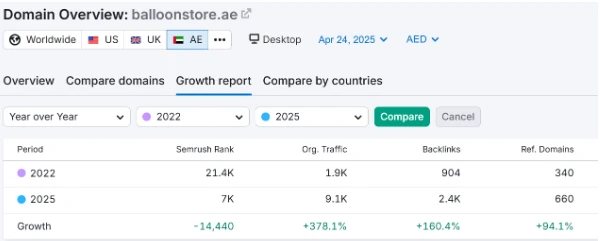What is Docker Swarm: Modes, Example and Working Updated
- digitalmanqoosh
- March 16, 2023
- Uncategorized
- 0 Comments
Because containers are fundamental components of enterprise infrastructure, they are also high-value targets for attackers. There are three types of docker swarm nodes which are given below. A developer should implement at least one node before releasing a service in Swarm. A service describes a task, whereas a task actually does the work. Docker aids a developer in the creation of services that can initiate tasks. However, once a task has been allocated to a node, it cannot be assigned to another node.
Therefore, understanding the nitty-gritty of the Docker Swarm mechanism is a plus skill if you’re looking to become an invaluable DevOps expert. Swarm mode also exists natively for Docker Engine, the layer between the OS and container images. Swarm mode integrates the orchestration capabilities of Docker Swarm into Docker Engine 1.12 and newer releases.
Create a service
Kubernetes offers all-in-one scaling based on traffic, while Docker Swarm emphasizes scaling quickly. K8s also has self-healing capabilities that divert traffic away from unhealthy pods while replacing faulty ones. You can also use intelligent scheduling and service replication to ensure high availability. A Swarm service is the equivalent of a container and all of the information needed to instantiate and run it.

You can also specify these flags as part of the update, as arguments to
docker service update. When updating a service with docker service update, –placement-pref-add
appends a new placement preference after all existing placement preferences. –placement-pref-rm removes an existing placement preference that matches the
argument. While
placement constraints limit the nodes a service
can run on, placement preferences try to place tasks on appropriate nodes
in an algorithmic way (currently, only spread evenly). For instance, if you
assign each node a rack label, you can set a placement preference to spread
the service evenly across nodes with the rack label, by value.
Kubernetes challenges
Creating
and maintaining images for Docker Official Images is a collaborative process. It takes
place openly on GitHub where participation is encouraged. Anyone can provide
feedback, contribute code, suggest process changes, or even propose a new
Official Image.

Like with most IT choices, the Kubernetes vs Docker Swarm debate depends on your company’s needs. Swarm integrates seamlessly with Docker tools, is easy to set up, and works like a charm with smaller workloads. Kubernetes is a more robust solution backed by years of industry-leading expertise and is a better fit with more complex infrastructures. If your team can use the tool properly and you have a fitting use case, K8s is likely the better option. Swarm monitoring is typically more complex than tracking a K8s environment due to the volume of cross-node objects and services. Swarm requires users to perform scaling manually (via Docker Compose YAML templates).
Step 7: Create Swarm
You can configure a service to roll back automatically if a service update fails
to deploy. The –update-max-failure-ratio flag controls what fraction of tasks can fail
during an update before the update as a whole is considered to have failed. For
example, with –update-max-failure-ratio 0.1 –update-failure-action pause,
after 10% of the tasks being updated fail, the update is paused. You can also use placement preferences in conjunction with placement constraints
or CPU/memory constraints. You can also use placement constraints in conjunction with placement preferences
and CPU/memory constraints. You can also connect an existing service to an overlay network using the
–network-add flag.

However, in addition to the Docker platform, the company Docker, Inc. also offers Docker Swarm which is a container orchestration tool comparable to Kubernetes. While other platforms enable enterprises to work with containers, docker swarm Docker has gained popularity thanks to its ease of use and scalability. Today, Docker is a staple of cloud-native apps that use microservices architecture and CI\CD pipelines at enterprises of all sizes.
Log Monitoring and Management
This command starts an Nginx service with a
randomly-generated name and no published ports. This is a naive example, since
you can’t interact with the Nginx service. Docker https://www.globalcloudteam.com/ has many alternatives, and one of the closest is Kubernetes. Joining a service to a network lets its containers communicate with any other services on the network.

Unlike single Docker Containers, where a container stops when it fails, Docker Swarm automatically redistributes tasks among the available worker nodes whenever one fails. Docker Swarm refers to a group of Docker hosts (computers) networked as a cluster to deliver specified tasks. Each Docker host in this cluster is a node, also called a worker node.
Service and Tasks
In Docker Engine’s swarm mode, the user can deploy manager and worker nodes at runtime. The API that we connect in our Swarm environment allows us to do orchestration by creating tasks for each service. The task allocation will enable us to allocate work to tasks via their IP address. The dispatcher and scheduler assign and instruct worker nodes to run a task.
- Swarm is very useful for the administrators and developers in a Docker ecosystem.
- So, instead of installing the JRE onto your computer, you could simply download a portable JRE as an image and include it in the container with your application code.
- You can also specify these flags as part of the update, as arguments to
docker service update. - Docker Swarm is still included in docker-ce, but there is no longer a software-as-a-service for Docker Swarm.
- In the Cluster, all nodes work by co-coordinating with each other, or we can say that all Nodes work as a whole.
However, an external load balancer can easily be integrated via third-party tools in Kubernetes. While K8s has various built-in capabilities, you are not stuck with default features—check out these Kubernetes tools and see what you can do to customize your K8s environment. Docker Swarm has basic server log and event tools from Docker, but these do not offer anything remotely close to K8s monitoring. You will likely need a third-party extension or app (InfluxDB, Grafana, cAdvisor, etc.) to meet your monitoring needs. Learn how to install Kubernetes on a bare metal server the easy way. Docker Swarm is also easier to pick up than K8s, making it an excellent choice for teams with less technical skill.
Swarm mode key concepts and tutorial
Swarm mode adds docker swarm’s orchestration features into Docker Engine 1.12 and newer releases. Kubernetes is a portable, open-source platform for managing containers, their complex production workloads and scalability. With Kubernetes, developers and DevOps teams can schedule, deploy, manage and discover highly available apps by using the flexibility of clusters. A Kubernetes cluster is made up of compute hosts called worker nodes. These worker nodes are managed by a Kubernetes master that controls and monitors all resources in the cluster.













